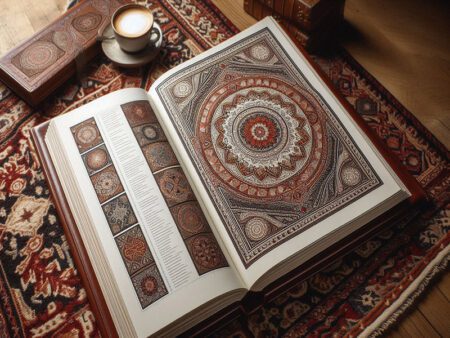
VERNA CARPET – Redesign by Parsineweb





Showing 1–20 of 37 results
Qom(or Qum, Ghom, Ghum) is an ancient city in the center of Iran, in the south of Tehran. The rug weaving industry has traditionally been common among the nomads and villagers of Qom. About 80 years ago rug weaving started in Qom city in a new way. This city is located between the big cities of Isfahan, Kashan, and Arak.
The Qom carpet industry has progressed by attracting immigrants and rug weavers from these cities.
Qom rug rarely has a special design. The rug patterns of this region are similar to the designs of other cities. The designs of the Qom carpet follow the principles of other Iranian rugs in terms of overall structure.
There is always symmetry and a correct combination of components in the design of the Qom rug. And even if it is not like Lachak-Toranj’s design, proper arrangement in different sections and color proportions is considered to achieve balance.
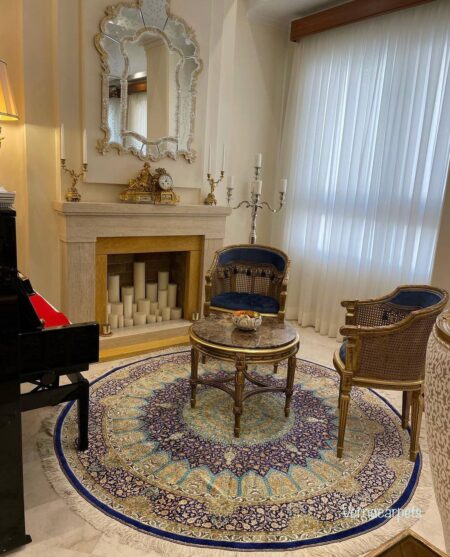
Design with Qom silk rug
As we said, Qom rugs are woven in the city of Qom. You can find the most exquisite and finely woven handmade all-silk Qom rugs in this city. Luxurious silk and wool rugs that give a magnificent appearance to any palace and hall.
All-silk Qom rugs are among the most expensive rugs in the world. But what are the characteristics of Qom carpets? If you are planning to buy Persian Qom silk rugs, we recommend that you stay with Vernacarpets until the end of this article.
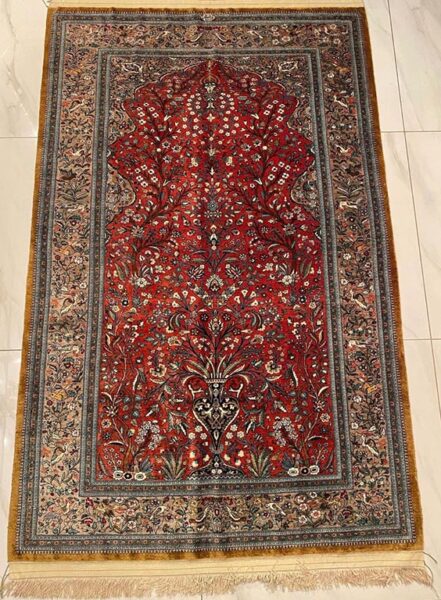
Qom rug by the late Master Yadollah Rajabian
You can read this article: Our Earth Needs Green Eco-Friendly Rugs
The designs that were common in Qom rugs in the past were imitations of other carpet designs such as Isfahan and Kashan. In a short time, Qom designers designed creative designs and launched carpets with these designs on the market. Symmetry is abundant in Qom rugs. Among the designs of Qom carpets, the hunting lodge is one of the famous designs that shows birds, animals, and hunting scenes. The most important designs of Qom handmade rugs are:
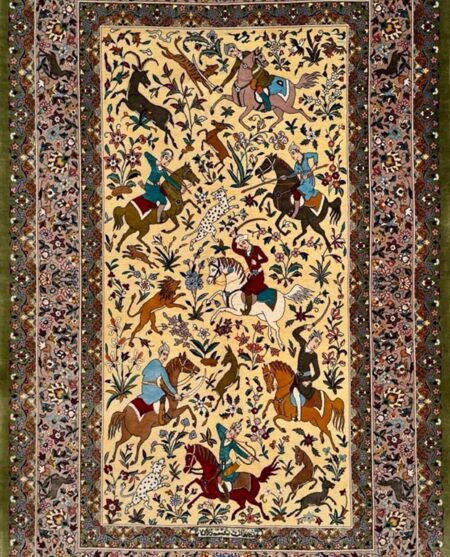
Hunting-Ground design, Qom silk rug
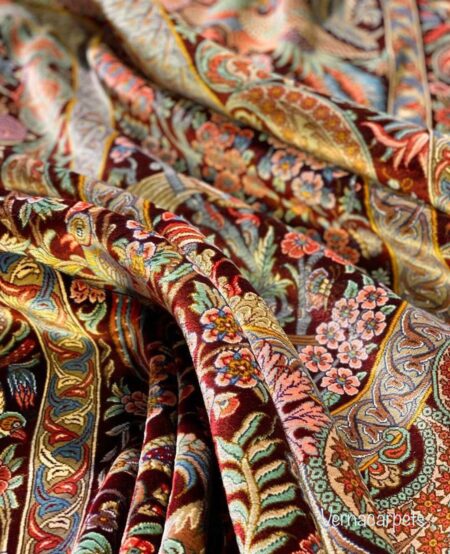
Pure silk rug
The number of colors used in Qom rugs was initially limited to 4-6 colors, but with the evolution of the initial designs of Qom carpets, the number of colors in Qom handmade rugs has also increased. The main colors of the Qom rug consist of 16 colors as follows: white, light and dark red, navy blue, cream, beige, black, khaki, light and dark blue, black, gold and copper, dark brown, and light brown.
Please look at this article too: Persian Turkmen Double-sided Silk Rug
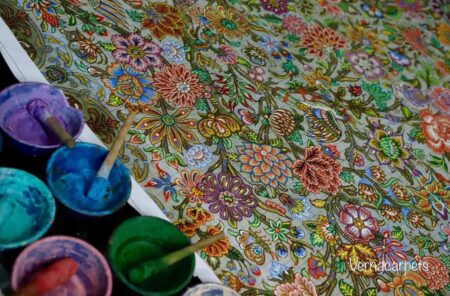
Map of silk rug
The first step in the production of this work of art is the drawing of the design. This work is done professionally by genuine Iranian designers.
At this stage, the design of the rug is drawn with a pencil on special paper. Then it will be painted to the taste of the designer. After the design of the rug is finalized, it is given to the rug weaver.
The second step is to prepare and spin the silk thread, which is done in Kashan.
Silk is a natural thread that is taken from the silkworm cocoon. The main ingredient of silk thread is protein, and it is considered one of the best, softest, and strongest threads in the world. First-class Chinese silk is used in Qom hand-woven rugs.
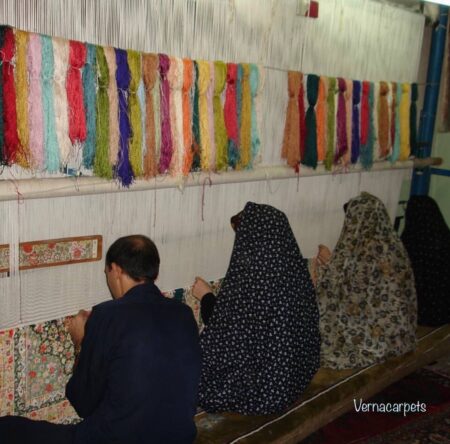
Weaving Qom rug
In the third step, the silk threads are dyed. The dyeing of the silk threads is based on the design of the rug and the colors needed in the texture of the carpet.
For this purpose, natural and chemical dyes are used for dyeing. First, the silk thread is boiled with dyes. Then it is placed in the fresh air to dry, and then it is washed in running water and dried again to be completely ready for use in rug weaving.
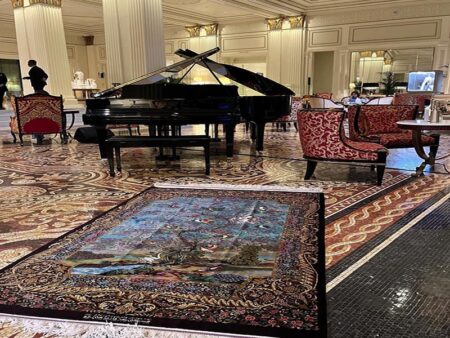
The next step is to prepare the rug and the tools needed for rug weaving. In the past, the looms were all wooden and nowadays sometimes they are wooden or metal.
Love, art, and elegance are the characteristics of Qom carpet weavers. They weave handmade rugs knot by knot, reciting poetry and praying. With each knot, they combine their love and art, creating a masterpiece that cannot be compared to any other rug.
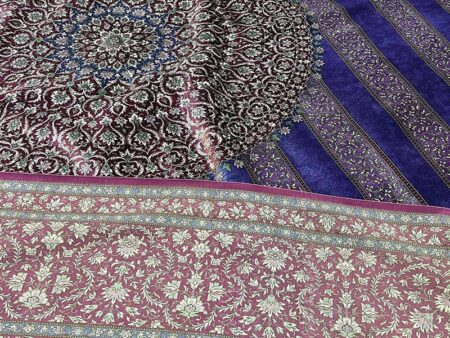
Back of Qom rug
The tools used include a knife with a hook and a heavy comb that places the rows of knots together. The weavers take a piece of thread tie a knot, and cut off the excess threads.
The Qom weaver uses the Persian knot and Turkish knot and continues knot by knot until the end of the row. After finishing each row, the weft is passed between the warp and then the knots and the weft are tied together using a heavy comb.

Final operation on the carpet
The skilled weavers of Qom can make about 8000 knots per day on a rug with a width of one hundred centimeters and a knot density of 1 million per square meter. If the rug is 150 cm long, it will take approximately 1 year to weave.
The stage of rug weaving Depending on the size of the carpet, it may last from 6 months to 3 years. After the carpet is finished, it is separated from the loom and ready for service.
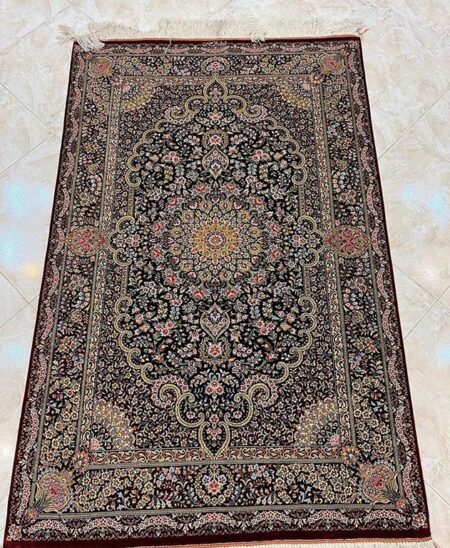
After finishing the weaving, the rug is polished and the upper layers of the carpet are shortened so that the surface of the rug is completely smooth and uniform. After this step, the carpet is washed with water and detergents. Qom water is the best water for washing carpets due to its salinity.
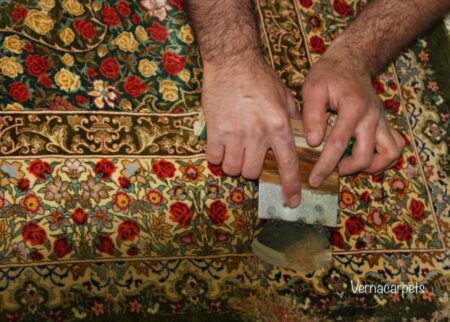
Trim the piles
Due to its time-consuming and high sensitivity, the Qom hand-knotted rug has a special way of determining the price. From the beginning of the carpet weaving to the end, an amount is given to the weaver as a fee every week or every month.
After finishing the weaving of the rug, a council called the wage council is formed. The members of this council, who are experts in rug weaving, are responsible for determining the The value of Qom rug. This pricing is based on the type of fibers used in production, dimensions, quality, texture, etc. Finally, the production manager is obliged to pay the amount specified by the council to the weaver.
Qom is the most important center of handwoven silk rug production in the country and more than 90% of handwoven rugs produced in this province are exported to different countries. On average, 40,000 square meters of handwoven silk rugs are produced in Qom every year, and about 10 million dollars of rugs are exported from Qom. The target markets of these carpets are mostly European, American, and Asian countries.
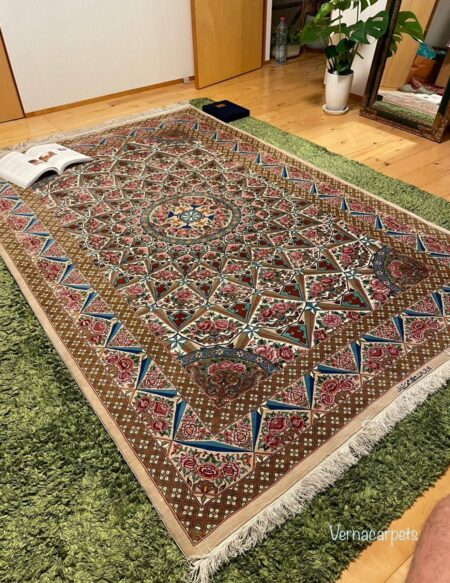
Qom Silk rug in Japan, by Master Mirmahdi
Qom silk rug is one of the important and famous Iranian handicrafts, which is of particular importance at the global level. When many people see the Qom silk rug for the first time, they think it is a painting, and after touching it and hearing the explanation about it, they realize that it is a rug, that is made of millions of knots of silk thread.
The use of silk as a natural thread and the efforts of dozens of experts and loving artists create a unique combination of authenticity, history, and culture. Qom silk rugs, as a lasting and exquisite product, are the beauty of any home.
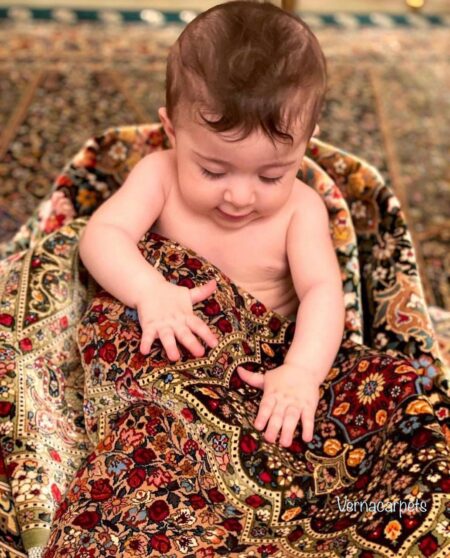
Qom rug silk
Several factors are effective in determining the price of a handmade Qom rug. These factors include: the size of the carpet, the quality of the silk, the brand of the carpet, the number of colors, the type of design the density of the weave, etc.
Qom rugs are often of high quality, have a long weaving period, and are in high demand. Therefore, the price of a handmade all-silk Qom carpet is higher than other Iranian carpets.
Online Vernacarpets in cooperation with reputable Qom silk rug manufacturers and providing the desired quality, helps you make a pleasant purchase. You can visit us with confidence to buy handmade Qom carpets. Low-quality silk rugs are also available in the market, so it is better to seek help from an expert when buying Qom rugs.